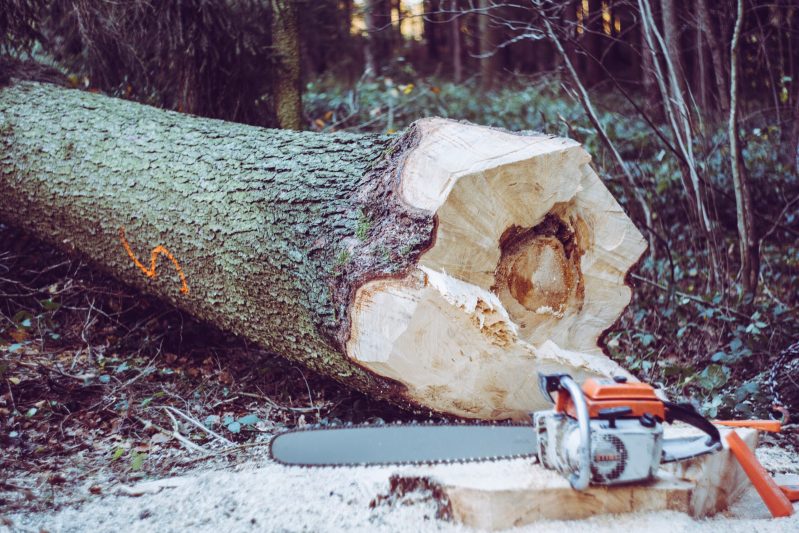No, the Janka scale doesn’t rate how well you can remove a square block from a stack of other blocks without it falling over. That would be the Jenga scale. Instead, the Janka scale rates the hardness of wood, primarily for flooring purposes. This handy guide will inform you of what the Janka test is and why it’s relevant to the average homeowner.
What Is The Janka Scale?

The Janka scale was created by Gabriel Janka to rank the hardness of various species of wood. The scale lists out the hardness of wood in a range from 0 to over 5,000. The higher the number is, the more resistant to wear, tear, and other day-to-day damage a specimen of wood is. Softer woods such as balsa, which are not suitable for flooring, have a Janka rating of only 70. Some of the hardest woods on the planet include the Australian Buloke and the Lignum Vitae, which both have Janka ratings well over 4,000.
How Is The Janka Test Conducted

The Janka test consists of measuring how much force is needed to push a 0.444″ steel ball halfway into a sample of wood. The rating itself is an exact measure of the pounds of force needed to complete the task at hand. A species of wood that measures 1,000 on the Janka scale required 1,000 pounds of force to embed the steel ball halfway into the wood. When looking at the Janka scale, the number listed is only a statistical average for that species of wood. There is a slight allowance for deviation as everything from the quality of the sample to the grain of the woods plays a roll in a sample’s exact Janka rating.
Common Janka Scale And Wood Hardness Mistakes

When looking for the perfect species of wood for your new hardwood floors, it’s important to consider several factors. Here some key pitfalls to avoid when selecting hardwood flooring based on the Janka scale.
1. A Low Janka Scale Rating Means It’s Not Strong

It’s easy to jump to conclusions and assume that a lower Janka rating means that a particular species of wood isn’t strong or durable. This assumption is especially hard to avoid when you start looking at and comparing Janka ratings. With proper care, even soft woods such as Douglass Fir, with a Janka rating of 660, can be an excellent option for flooring.
2. I Should Use The Highest Janka Scale Wood For My Flooring.
When searching for flooring, another common pitfall is opting for a very hardwood only for the fact that it has a higher Janka rating. Some problems arise, however, as you look into harder woods for flooring. Types of wood with high Janka ratings are harder to work with, which translates to more expensive installation fees. Some trees have Janka ratings so high, they are practically unusable for flooring purposes.
3. The Hardest Woods Are Maintenance Proof.

Another common mistake is thinking that the high Janka scale wood species are practically maintenance-proof. Unfortunately, this is not the case. If it were, the harder woods would likely be even more expensive and difficult to obtain. Having wood flooring of any kind means you need to take care to remove any particles of dirt or sand promptly to avoid wear and tear over time. Even the hardest woods are not immune to the scratching of animal claws or particulate matter over time.
4. I Should Always Consider Exotic Wood
Sometimes, opting for the elegant and luxurious sounding woods can be a poor decision. These woods are more susceptible to change based on the humidity. If you live in a climate where humidity levels can change rapidly and frequently, it’s best to avoid exotic wood.
Selecting the Right Wood For Your Floors

So how do you go about choosing the right flooring for your home? Here are a few of the most popular options and what makes them the most heralded flooring choices.
American Red Oak (Janka Scale 1290)
American Red Oak is one of the most popular options for hardwood flooring. Red Oak has a hearty, but not overstated hardness of 1290, and a red hue that brightens any room. It’s especially great for everyday homes.
Brazilian Cherry (2350)
If your environment and budget allow it, Brazilian Cherry is a standout option. It is an exotic wood with a higher than average Janka rating, making installation and overall price a little higher. However, it has a range of tones and a distinct grain that make it a beautiful option in any home.
Douglas Fir (660)

This variety is a softer option that is more friendly on the wallet, but with proper care, doesn’t sacrifice durability. It provides a comfortable warming tone and even works well with the trendy wide plank style.
Red Maple (950)
This maple variety provides a strong option with an understated color. The grain is low contrast, which provides a rustic look to your home.

The Janka scale can seem confusing at times and choosing the best hardwood flooring for your home can leave you with enough options to make your head spin. However, once you understand the basics of the Janka scale and what it means, selecting your home’s flooring is as easy as choosing which one you think looks the best.
